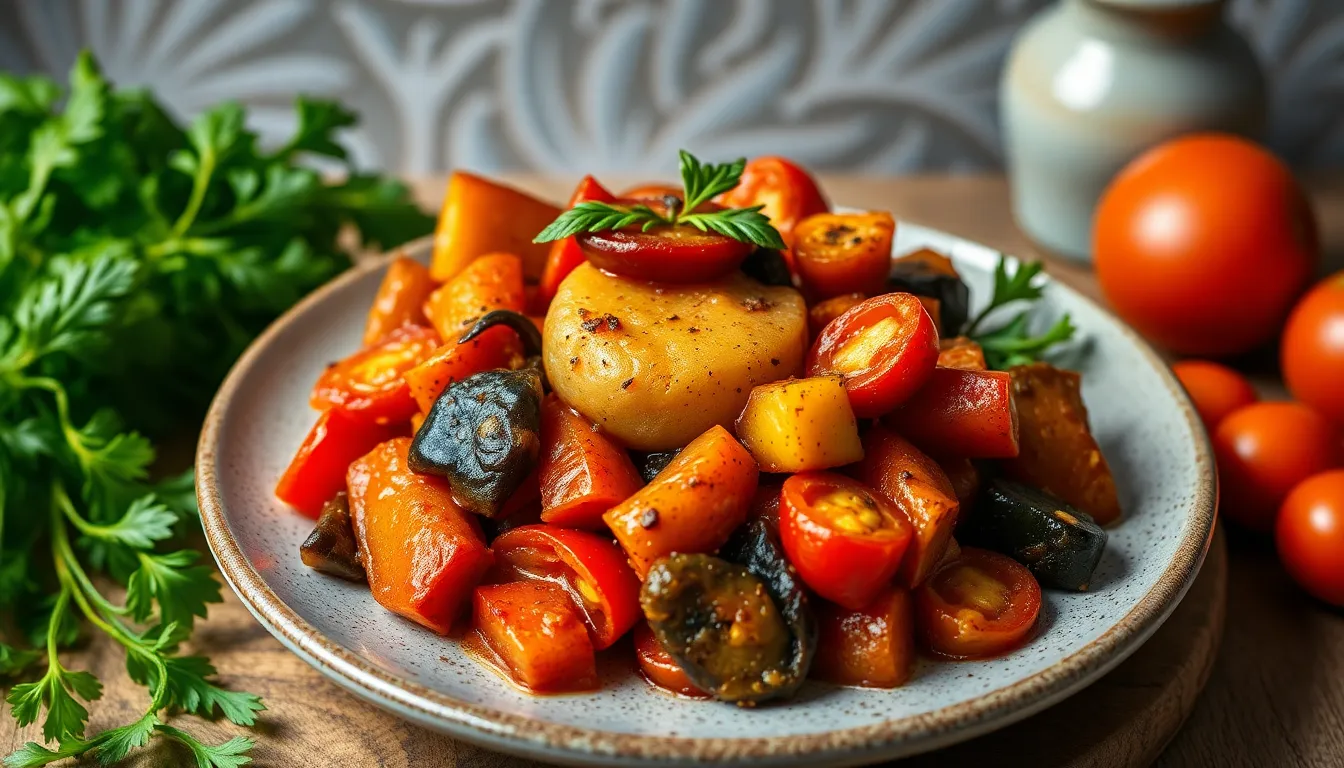How to Make the Perfect Ratatouille: A French Classic
Introduction
Ratatouille, a celebrated dish of French cuisine, has a rich history and significance that transcends its humble ingredients. Originating from the Provence region, this delectable vegetable medley is a symbol of rustic French cooking. Traditionally served as a side dish, ratatouille has evolved into a culinary masterpiece that showcases the vibrant flavors of summer vegetables.
One of the most appealing aspects of ratatouille is its versatility. It can be enjoyed hot, cold, as a main dish, or even as a topping for grilled meats. Furthermore, this dish is packed with nutrients, making it an excellent option for those seeking a healthy meal. The combination of fresh vegetables not only tantalizes the taste buds but also contributes to a well-balanced diet.
Join me on this culinary journey as we explore how to create the perfect ratatouille—a dish that is both a feast for the eyes and the palate!
Ingredients
Essential Ingredients
To create a truly authentic ratatouille, you will need the following key vegetables and herbs:
| Ingredient | Quantity |
|---|---|
| Eggplant | 1 medium |
| Zucchini | 1 medium |
| Bell Peppers | 2 (1 red, 1 yellow) |
| Tomatoes | 4 ripe |
| Onion | 1 large |
| Garlic | 2 cloves |
| Fresh Basil | 1/4 cup (chopped) |
| Olive Oil | 3 tablespoons |
| Salt and Pepper | to taste |
Preparation Steps
Prepping the Vegetables
The key to a successful ratatouille lies in the preparation of the vegetables. Here’s how to wash, peel, and chop each ingredient:
- Eggplant: Cut off the green top and slice the eggplant into rounds, then into cubes. To prevent browning, soak the cubes in salted water for 15 minutes before rinsing and draining.
- Zucchini: Wash thoroughly, then slice into rounds. No need to peel, as the skin adds texture and color.
- Bell Peppers: Cut in half, remove seeds and membranes, then slice into strips.
- Tomatoes: Blanch to remove the skins if desired. Cut into wedges or chunks.
- Onion: Peel and chop into small dice.
- Garlic: Mince the cloves finely.
- Fresh Basil: Chop the leaves finely, discarding any tough stems.
Cooking Techniques
Understanding the cooking techniques is vital for enhancing the flavors of ratatouille. Below are two popular methods:
- Sautéing: This method is quick and helps in developing flavor through caramelization. However, be cautious not to overcrowd the pan, as it may cause the vegetables to steam instead of sauté.
- Roasting: Roasting intensifies the natural sugars of the vegetables, adding a depth of flavor. It requires more time but results in a slightly charred, smoky taste.
Regardless of the method chosen, layering flavors is essential. Start with aromatics like onions and garlic, then add vegetables in stages based on their cooking times.
Cooking Instructions
Now that you’ve prepared your ingredients, it’s time to cook! Follow these step-by-step instructions to create the perfect ratatouille:
- Heat 3 tablespoons of olive oil in a large pan over medium heat.
- Add the chopped onions and minced garlic. Sauté until the onions are translucent, about 5 minutes.
- Introduce the eggplant cubes and cook for another 5-7 minutes until softened.
- Add the zucchini and bell peppers, stirring occasionally for 5 minutes.
- Stir in the chopped tomatoes and season with salt and pepper to taste.
- Finally, incorporate the fresh basil and let the mixture simmer for 20-25 minutes until all vegetables are tender.
Cooking Tips
To achieve the perfect texture and flavor in your ratatouille, consider the following tips:
- For a firmer texture, cut the vegetables into larger chunks.
- Cooking times vary: Eggplant and bell peppers may take longer to soften, while tomatoes will break down more quickly.
- Ratatouille can be served hot, room temperature, or cold. It pairs beautifully with crusty bread or as a side to grilled meats.
Variations of Ratatouille
Traditional vs. Modern
While traditional ratatouille emphasizes the use of fresh, seasonal vegetables, modern interpretations often incorporate unique twists. Here’s a breakdown of the differences:
- Traditional Ratatouille: Focuses on classic Mediterranean vegetables cooked together, typically in a rustic style.
- Modern Variations: Some contemporary recipes may use techniques like sous-vide or incorporate additional ingredients such as quinoa or lentils for added protein.
If you’re looking for substitutions, consider using:
- Squash or pumpkin in place of eggplant
- Cherry tomatoes for a sweeter flavor
- Fresh thyme or oregano instead of basil for a different herbal note
Conclusion
Ratatouille is more than just a dish; it is a celebration of summer vegetables and a testament to the simplicity of French cuisine. Its ability to be both comforting and elegant makes it a versatile choice for any meal. Whether you opt for the traditional method or want to experiment with modern variations, the essence of ratatouille remains the same—a delightful mix of flavors that showcases the beauty of fresh ingredients. So gather your vegetables, follow these steps, and indulge in the flavors of France right in your own kitchen!




